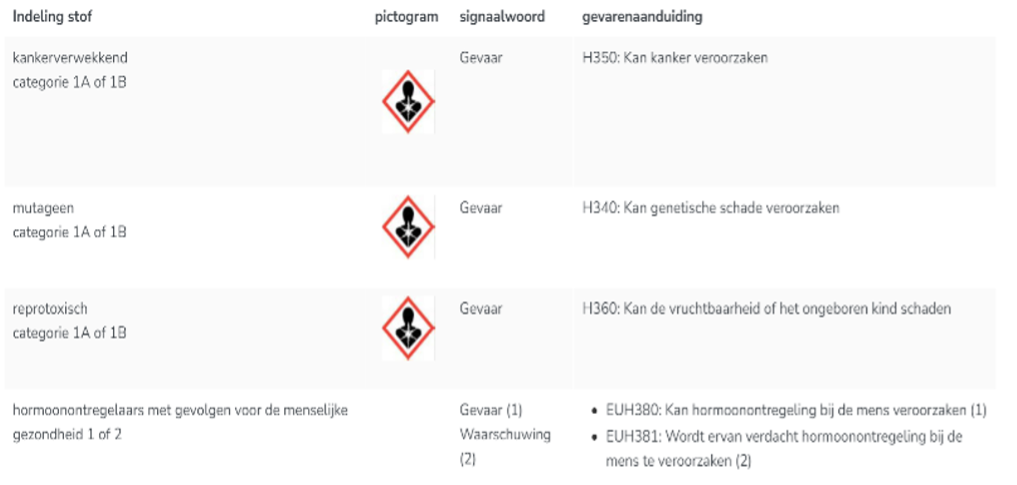How can you safeguard your staff from endocrine disruptors?
The Royal Decree of July 2, 2023, providing measures to safeguard personnel from endocrine disruptors, was published in the Belgian State Bulletin on July 18, 2023. Endocrine disruptors are included in the scope of Title 2 (carcinogenic, mutagenic, and reprotoxic substances, as well as agents with endocrine-disrupting properties) of Book VI of the codex on workplace well-being.

| IN THIS ARTICLE |
|
1. Effects of endocrine disruptors |
Effects of endocrine disruptors
An endocrine disruptor is a chemical substance or mixture of chemical substances (of natural or artificial origin) that is not produced by the human body and disturbs the endocrine system's function.
The new RD extends the stronger protections already in place for workers exposed to carcinogenic, mutagenic, and reprotoxic substances to workers exposed to endocrine disrupting compounds.

Workplace exposure to endocrine disruptors
Employees in numerous occupations may be exposed to endocrine disruptors and compounds suspected of being or already recognised as endocrine disruptors:
- The chemical industry employs various plastics, epoxy resins, paints, varnishes, biocides, cosmetics, and so on to produce polycarbonate, which is used in products such as food and beverage containers (cans and canned goods), protective coatings, bottle caps, water pipes, and so on.
- Plant protection agents and biocides are used in agriculture, horticulture, and pest management.
- The construction business employs certain paints, solvents, flame retardants, and so on.
- The cleaning industry employs specific detergents and biocides.
- Textiles, for example, are treated with brominated flame retardants in the textile industry.
- The beauty care industry employs some personal care products, such as homosalate as a UV filter, benzophenones as a UV filter, and certain parabens, such as butylparaben, as cream preservatives.
- For example, the fire department employs PFAS-containing fire-fighting foams.
- Endocrine disruptors are used in recycling and garbage disposal, such as phthalates in floors, cables, plastics, and lead in batteries and roofing materials.
Whatever the workplace, having a clear overview is important to manage risks on the workfloor.
An Annex VI.2-4 "List of Endocrine Disrupting Substances and Mixtures" was added to Book VI of the Occupational Welfare Codex.
Examples of substances identified as endocrine disruptors: bisphenol A (BPA), Bis(2-ethylhexyl) phthalate (DEHP), Benzyl butyl phthalate 5BBP), Diisobutyl phthalate (DIBP).
How can Bizzmine VARIO assist with worker protection?
Workers must be protected from endocrine disruptors. With our risk management module, risks and prevention measures can be mapped out. All hazardous substances (with their hazard designations) and their associated safety measures (precautions, PPE management, auxiliary measures, waste disposal) can be perfectly managed and controlled in our Hazardous Substances module.
Also read: Hazardous Substances

Furthermore, endocrine disruptors are specifically included in the regulations on maternity protection (Title 5 of Book X of the Codex) and protection of young people at work (Title 3 of Book X of the Codex). Indeed, pregnant women and their unborn children, as well as children and adolescents, are particularly vulnerable risk groups for exposure to these chemicals.
Bizzmine VARIO's health surveillance module also addresses the required health assessments for workers exposed to endocrine disruptors. The health matrix makes it simple to check the status of each health certificate. In this module, all legal health assessments (periodic, spontaneous, prior consultations, etc.) can be completely monitored.
%20(1).webp?width=2000&name=two-happy-businessman-working-laptop%20(3)%20(1).webp)


